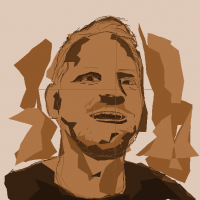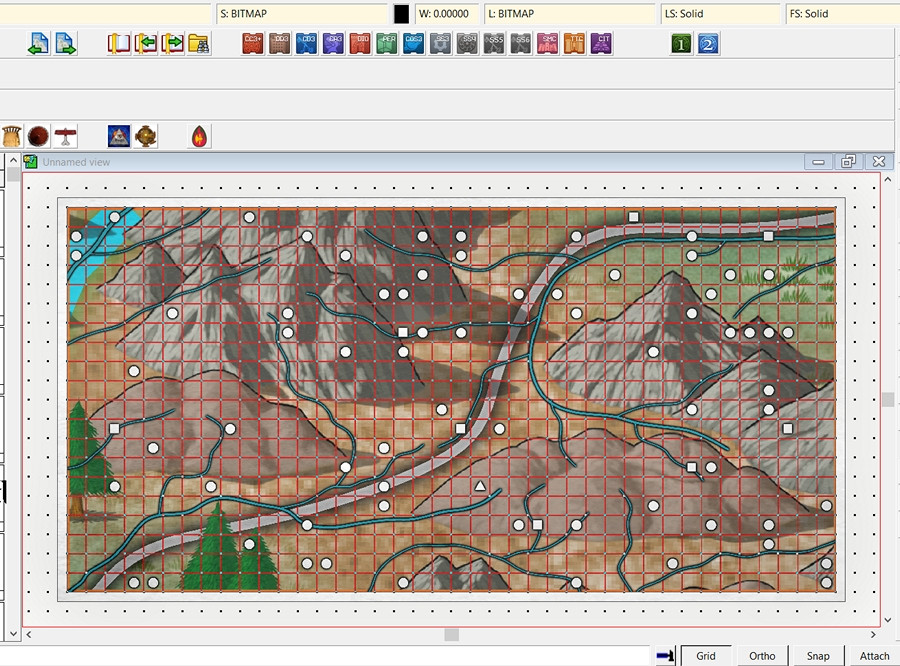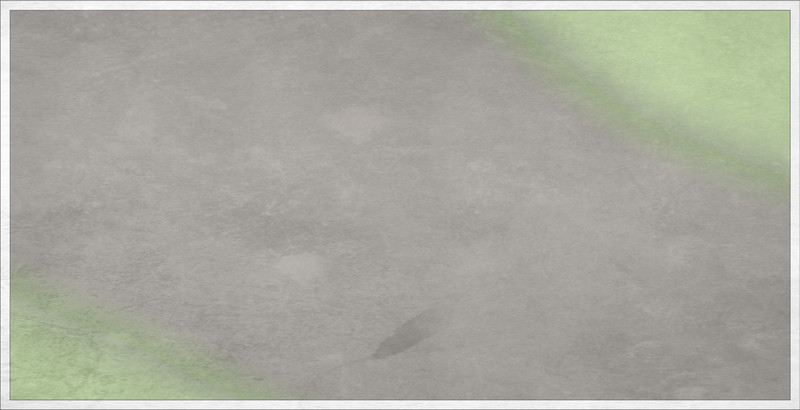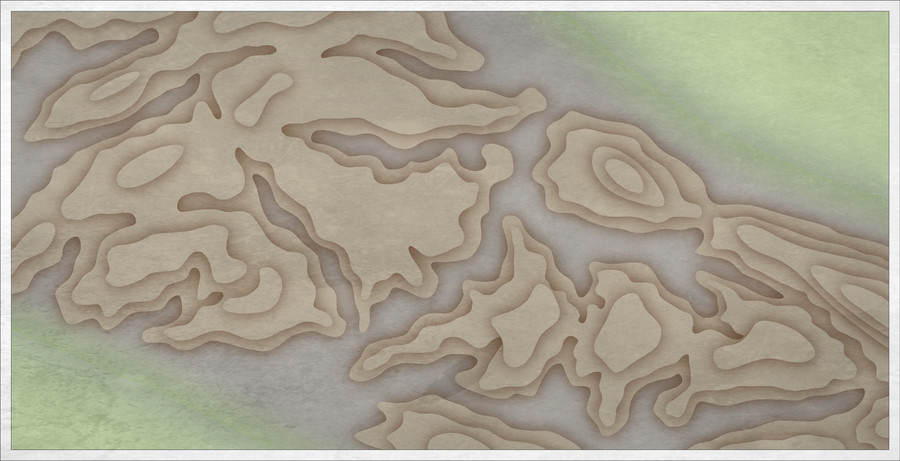
Wyvern
Wyvern
About
- Username
- Wyvern
- Joined
- Visits
- 3,151
- Last Active
- Roles
- Member
- Points
- 5,380
- Rank
- Cartographer
- Badges
- 24
-
Pen & wash question
Realistically, and much as Sue already said, if you're aiming for a hand-done pen and wash style illustration, it should look like a watercolour painting, where the wash sometimes covers the line, sometimes runs short of it. There isn't a voting option for that, and I really don't see this as an "either or" choice. So sometimes that'd be "A", sometimes "B", but more often a mix of both, with some additional overlap too.
-
The Expanse rpg; several starships, Annual scifi tiles and Cosmographer
My big problem with large ships is visualizing the layout/deck plans.
I forget whether you mentioned having a copy of any of the Metamorphosis Alpha RPG books or not now Jim, though I suspect from this comment probably not, as even the limited floorplans for the two complete decks, and the brief notes on all the others, in the first edition rules from 1976, would have given you a few pointers in this regard.
In one sense, Remy's right in suggesting it may help to think of the whole ship as like a huge city, actually more like a small country, given its gigantic size. Depending on how you envisage the entire craft as functioning, it's perfectly possible some of the decks might have a single function, or several major functions, each. Something like a farming deck for food production and air recycling, including breeding populations of domesticated animals, for instance, while there could be huge areas given over to parked-up machines on another deck for use on whatever planet the ship eventually reaches to colonise (since that's the primary reason such vast craft were envisaged originally). Elsewhere, there could be factories and machinery for use in them stored on another deck, again to get things functioning once the planet was reached, with maybe one entirely water-filled, for living aquatic foodstuffs, and as a water supply for the ship (could easily be segregated into fresh and sea water parts). Plus power supplies of varying kinds, of course.
It might help to work out what the total floor area is for the whole craft, and then compare that to a populated area on Earth somewhere, and see exactly what sort of features lie within a similar-sized zone, and what of those would be useful/essential on a ship destined to be in space for hundreds of years or more.
Hopefully in all this, we can help get you back on course!
-
Which style for... Post apocaliptic meshup
Yeah, I've been involved peripherally in a number of discussions elsewhere online lately regarding the use of AI art, including specifically that generated by Midjourney, because a lot of people - primarily artists - have become increasingly concerned about the direction this stuff is taking, most especially how the so-called AI systems are using artworks available online to generate their final images.
The matter is incredibly complex, and much of it remains uncertain, notably how copyright laws in various places pertain to AI-generated artworks, largely because they have never been legally tested this way (a couple of practicing US lawyers posted some very helpful discussions regarding the US situation a little while ago on one of the Discords I'm on, which were very enlightening in this regard).
I can do no better to help inform anyone here as to the current situation, than suggest those interested should read this blog posting from Dec 8th this year, by Jon Hodgson, a British "real" artist, RPG and game designer, who runs a company called Handiwork Games (which is where the blog is). Jon used Midjourney to generate much of the artwork in a new RPG he published this year, so he knows exactly what he's talking about from the genuine artist's perspective. He's also decided that any reprint of said RPG will have all the Midjourney artwork removed, to be replaced with his own, or other artists', real art, and he will not be using Midjourney, or other AI-generated artworks, again.
Personally, I've become very cautious about using any AI-generated artwork now, and would not do so in anything that wasn't purely for my own use.
-
Community Atlas: Map for the Duin Elisyr area, Doriant
It seems we may soon be looking to more new maps, and some fresh mappers, for the Atlas, which can only be A Good Thing!
Meanwhile, back at the camp, and wondering which style to choose for the area map...
One of the issues with symbol-based overland styles is the hidden "north" side of everything, where you can't properly show what's happening there without using some sort of indicator or map notes. Often, that doesn't matter too much, but for details of what's where within a mountain range, it can become more problematic. For this area map, I decided to use a top-down drawing style instead, and picked one I've been intending to try for a while, the Worthington Historical from CA91. This has only a few symbols for the settlements particularly, with the terrain and vegetation all illustrated using bitmap-fill drawing tools and sheet effects.
As the area's size had been determined already, the one thing I changed when creating the new map in CC3+ was the background fill style, opting for the green Farmland fill in place of the default blue Sea one, as there's no large expanse of open water here. After that, I simply created the usual new BITMAP Sheet and Layer, and inserted my features map onto them:
The grid dots that are showing are from a new "2 miles, 2 snaps" one created for the purpose as well, making for both easy placement of the inserted map, and a check that the scaling was correct (I did a double-check using the Info -- Distance drop-down menu command as well, just to be sure).
I sketched in a base colour for the rising land that fills much of the map except in the top right and lower left corners using the Terrain Default, Hills tool. That was rather hard to distinguish, as it uses the Solid 10 fill, the palest of the transparent "Solid" fills. I tried changing it to Solid 20, and while the Glow effect on the TERRAIN HILLS Sheet looked interesting, the fill itself still didn't really show clearly enough. After a further couple of failed attempts using the darker Solid fills, and an examination of what effects were on which sheet, plus a few more experiments, I ended up simply copying the drawn HILLS area to the CONTOURS (LAND) Sheet, and changed the fill style to the Land, Default style, which produced this:
Happy with that, I began draughting-in the hill and mountain terrain using the Terrain Default, Mountains drawing tool, only to find that the two Mountain sheets had no effects on them. I'm not sure if this may have been corrected subsequently in that Annual's download file. If not, it's easy enough to correct by just copying the effects over from one of the sample maps for this Annual issue instead. Which I did!
I had a couple of false starts in drawing the terrain. While it's important to try to mimic the placement of symbols with where the more dominant features are in this kind of "zooming-in" area map, I find it's often a question of trial and error to see what looks best when converted to a different, in this case more topographical, drawing style, something that will likely also need testing variations in the sheet effects subsequently as well.
As the mountain terrains are all drawn using the same fill and effects in the unadjusted Worthington Historical style, stacking mountain contours atop one another also creates the dreaded mottling of transparency acne, thus a series of "BACK" sheets without effects and a different fill had to be added - and changed - each time I redrew the various contours during this. So long as you do this singly or in batches, to make best use of the "Prior" selection option, that's not too bad though.
This shot is only partway through the process of changing the contours, so it looks really messy still in places. The Glow effect on the various terrain sheets is obviously too strong as well, for all it helped keep things clearer for me while drawing to this point. Hence why I hadn't changed it at this stage. This is as far as I got during the session:
The final image for today shows what happens when one of those "BACK" Sheets is deactivated:
Someone's knocked over the pepperpot 😉.
More to follow.
-
Community Atlas WIP - Panaur region of Doriant
Don't forget that aside from adding more character to the coastline, you can also add smaller islands there in places to help break up that "smoothness" aspect, much as other features too small to have been added on the original larger-area map can be added inland. What's shown as a peninsula on a large scale, might be really an island with a tidal causeway headland instead when you start looking closer, say!
I'd definitely recommend using your Atlas mapping to experiment with different styles; it's what I've been trying to do for some years now! It does indeed push you into thinking in different ways about mapping, and trying out new things in terms of how to use the program.
-
Playing with Creepy Crypts
-
Panzer sample thread
Looking good!
I agree on the ground tracks point, particularly for the six and eight-wheelers as they had variations on independent steering per wheel group (and the four-wheelers had independent wheel drives too), so could give much broader overall track spreads.
It might be helpful to have an additional group of aerials to fit to the command vehicles variants (e.g. both the 231 variants, the 232s (6- and 8-rad) and the 222 variant 223), as these are such obvious fixed features in an overhead view, and they have to pass above the turrets, so would need to be drawn that way to allow for the turret pieces to rotate properly.
If you're including the 247, you might want to have the Kfz 13, and the variant Kfz 14 command vehicle - again, it has an overhead aerial, if no turret problem this time!
There are also the SdKfz 221, 260 and 261 (radio car variant of the 260), which you might be able to draw as simply variant top structures/turrets, as being similar to the 222 overall. The 231 (8-rad) headquarters variant, the 263 might be another possibility, along with the 263 (6-rad).
I'll go away now 😎
-
Commission Map - Realm of Arduin
Yeah, this is really big! Presumably going for a wall-hanging poster-sized version if it's to be printed-out, I'd imagine, or all that intricate detail is going to be lost!
Congratulations on getting the borders to work with the dash and double-dot arrangement with no issues. These things are ever a nightmare in CC3, I know. (And on the more detailed view, all the other dashed lines as well!)
On the easy-to-view Forum version, I'm losing the knotwork corner details in the mountains especially - the colour's too similar. Maybe try a glow of some kind, or maybe a different shadow to pull-up the decorative elements?
The "Khorsar" label right beside the "Arduin" cartouche is very distracting; one or other would benefit from moving further away.
The surrounding nation/area labels aren't as clear as they might be in places, ironically including the Khorsar one, particularly where they overlie the mountains. Again, maybe a glow or shadow would help.
Is there a particular reason why only the Ozharen border has been colour-highlighted? That name-label might be tweaked slightly too, as the "O" is currently a little too near the map border overall.
The scalebar and compass rose are partly buried below the lower-left corner decoration currently, and the North point of the compass rose is obscuring part of the "Talafar" label.
On the more detailed Gallery view (and also on the Forum view version), the watercourses maybe aren't as clear as they could be, notably again in the mountains, plus in the woods at times. In places, they also seem to be impossibly narrow, to the point of almost vanishing, between far broader stretches, which looks odd, if perhaps required as a quirk by the commissioner (given how common these features seem to be). Several lakes appear rather too angular as well, though again this could be simply a required quirk, as they too are pretty frequently-seen.
The City Cliffs symbols in The Great Rift area could perhaps use some tweaking, as they look rather too angular in places, compared with how nicely curving they are in others. This could be worth considering too in that Devil's Footprint crater.
In the lower right corner, there's a tiny label that I think reads "Gast Water" which is too close to the corner decoration. The "Maragore" label could be moved lower, to fit within the border lines better, and the "Barbarian Hobbit Tribes" label it's currently partly obscuring should probably be moved as well, and perhaps set-up on two text lines, not just the one, to shorten it to fit with the moved Maragore label.
That's what I spotted easily in a quick check, at least, though obviously many of the smaller details can't be viewed properly even using the Gallery version.
Good luck!
-
Looking for Symbols
@Royal Scribe Have you taken a look at the DD3 Creatures symbol options? There isn't a gargoyle, but there is a golem that might work as one. None of the options in that have bases, and most have varicolor options (though not all that work on the whole creature, to turn it to stone, say).
-
Panzer sample thread












